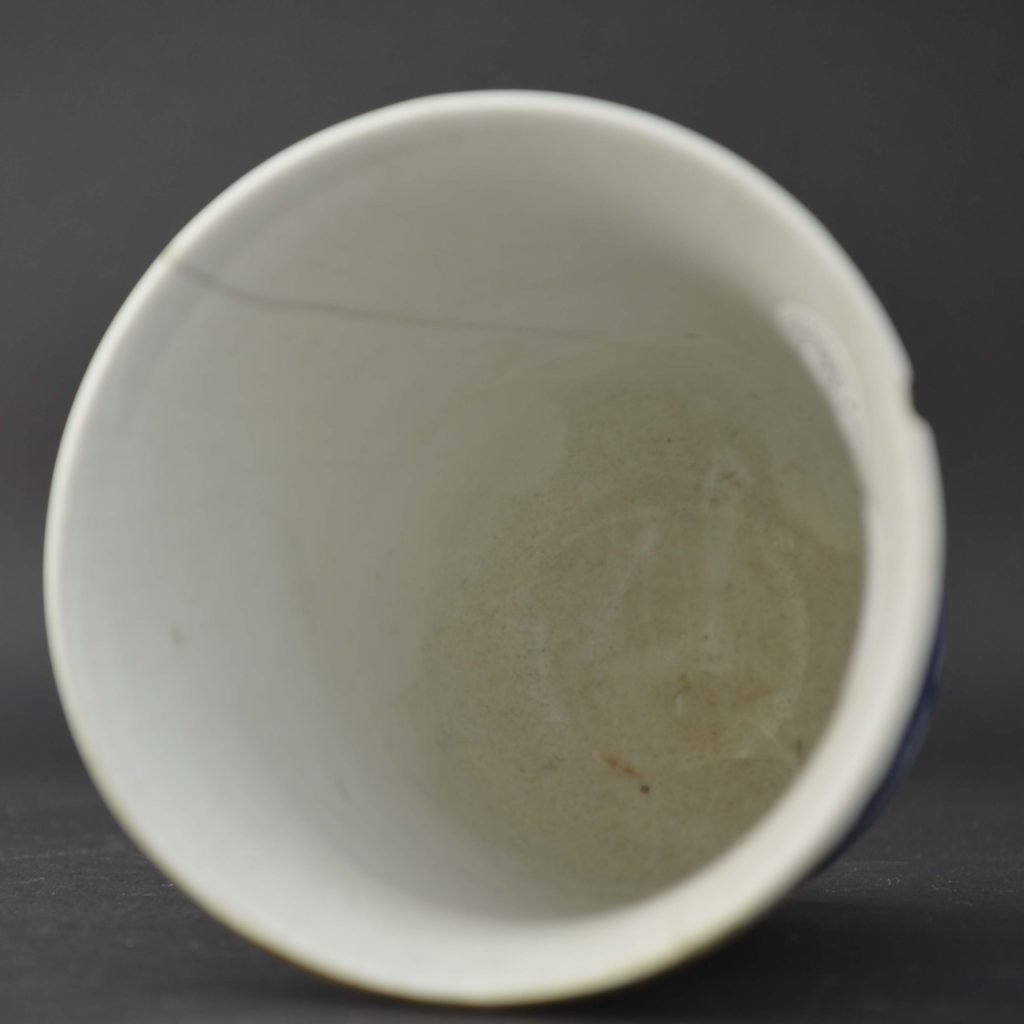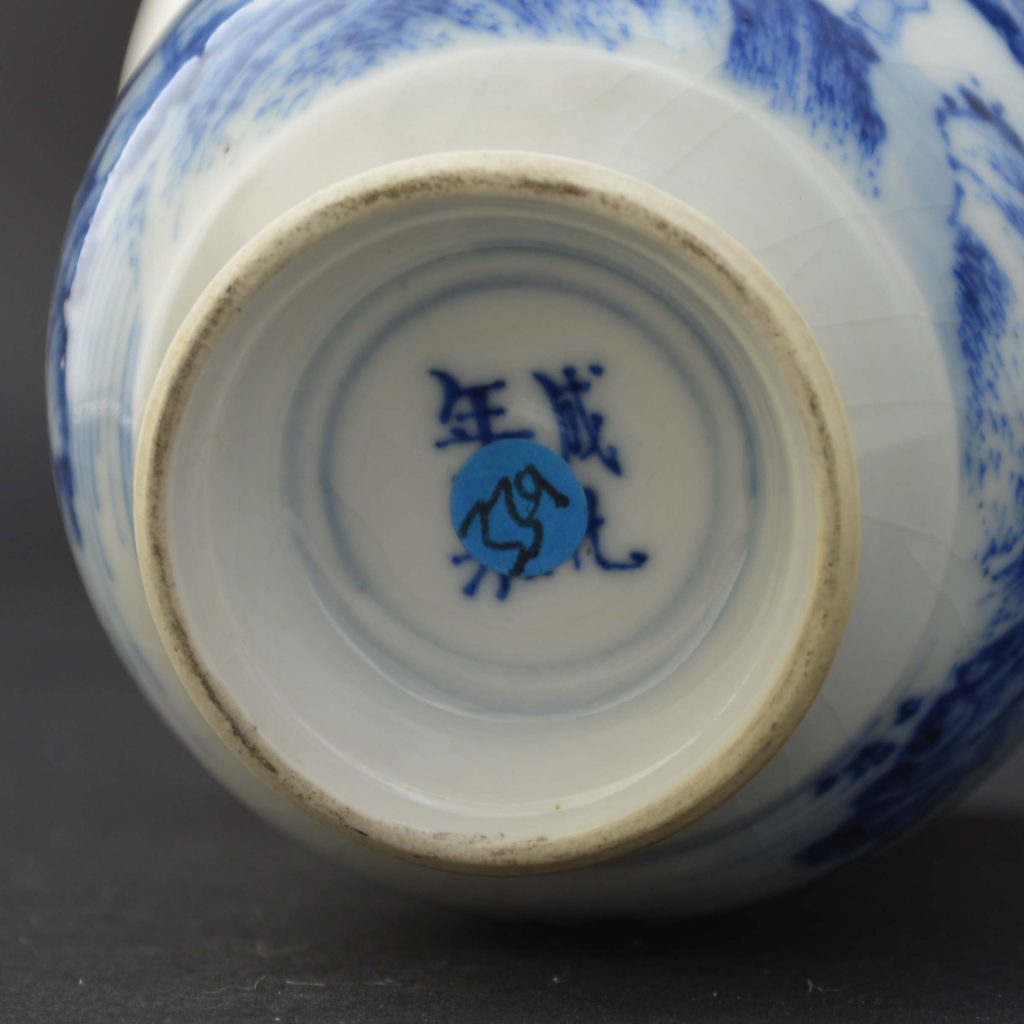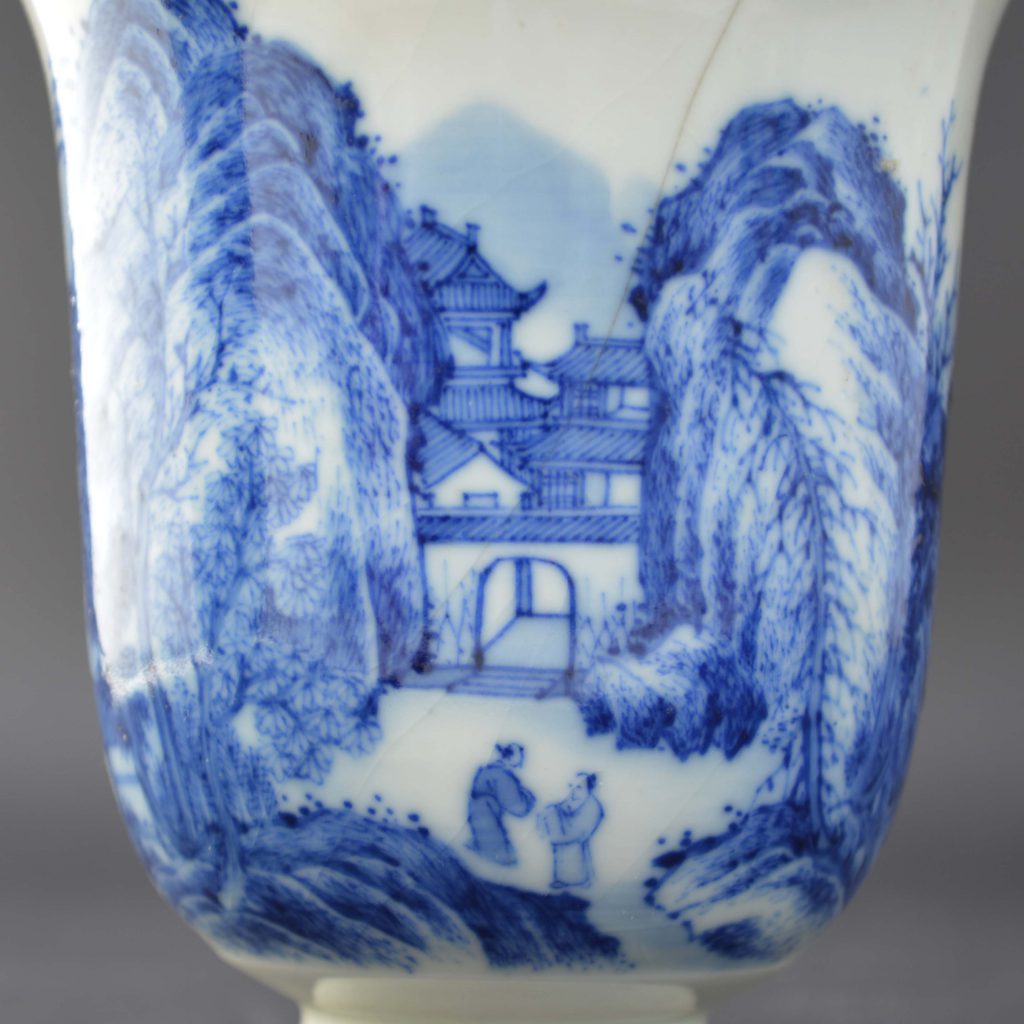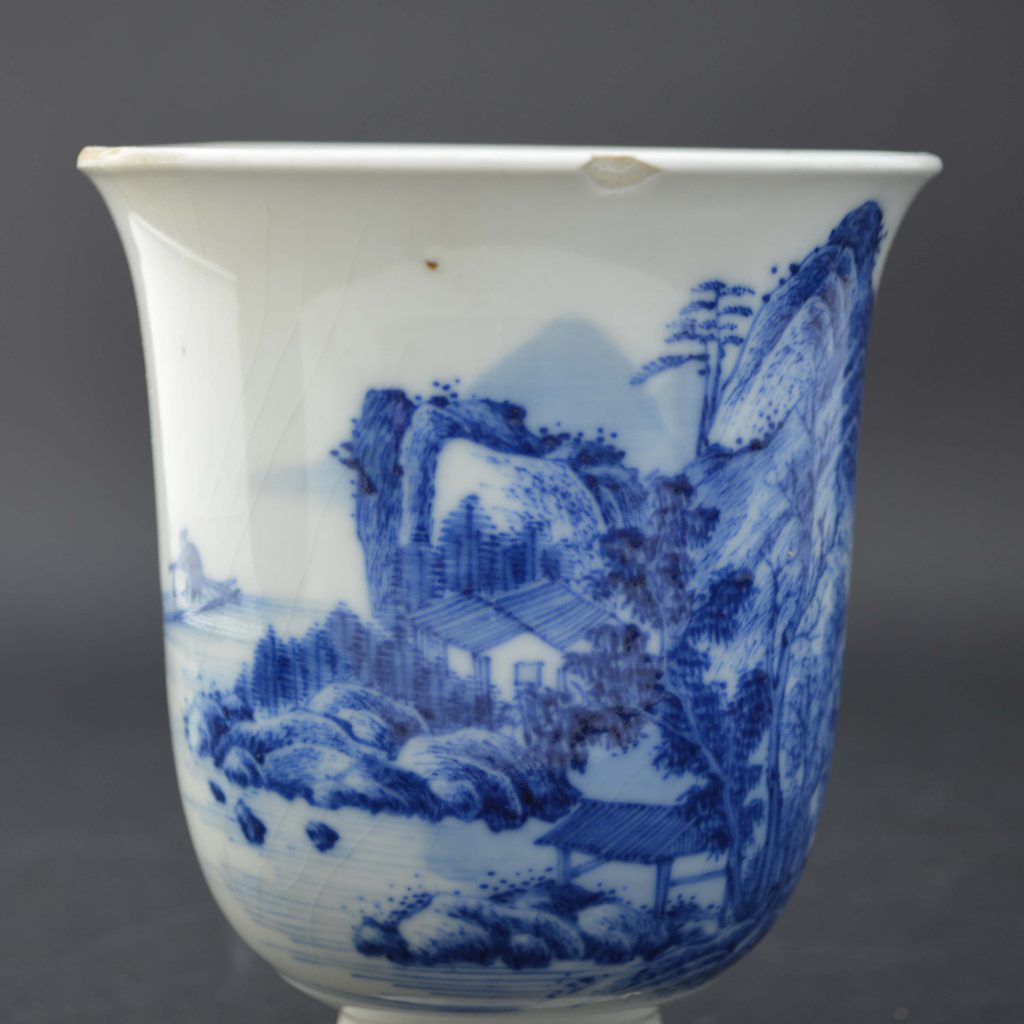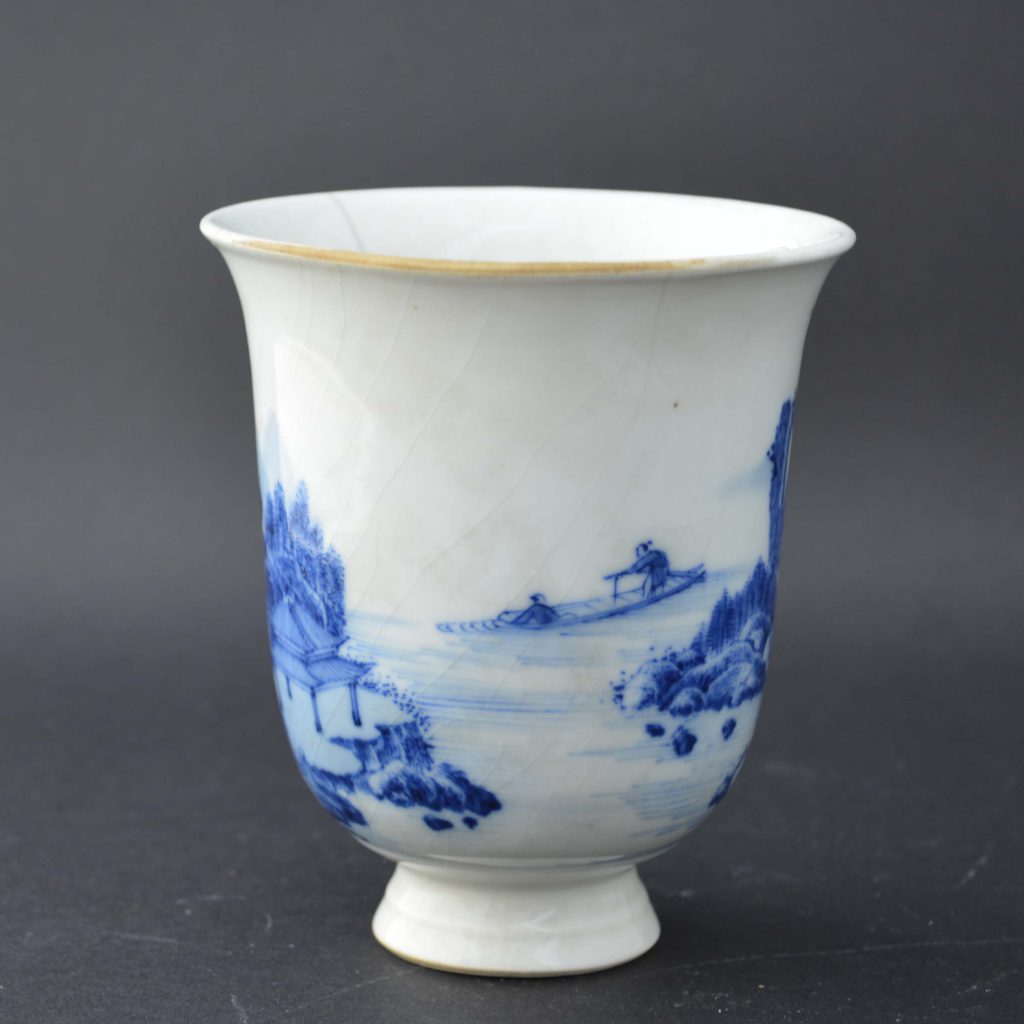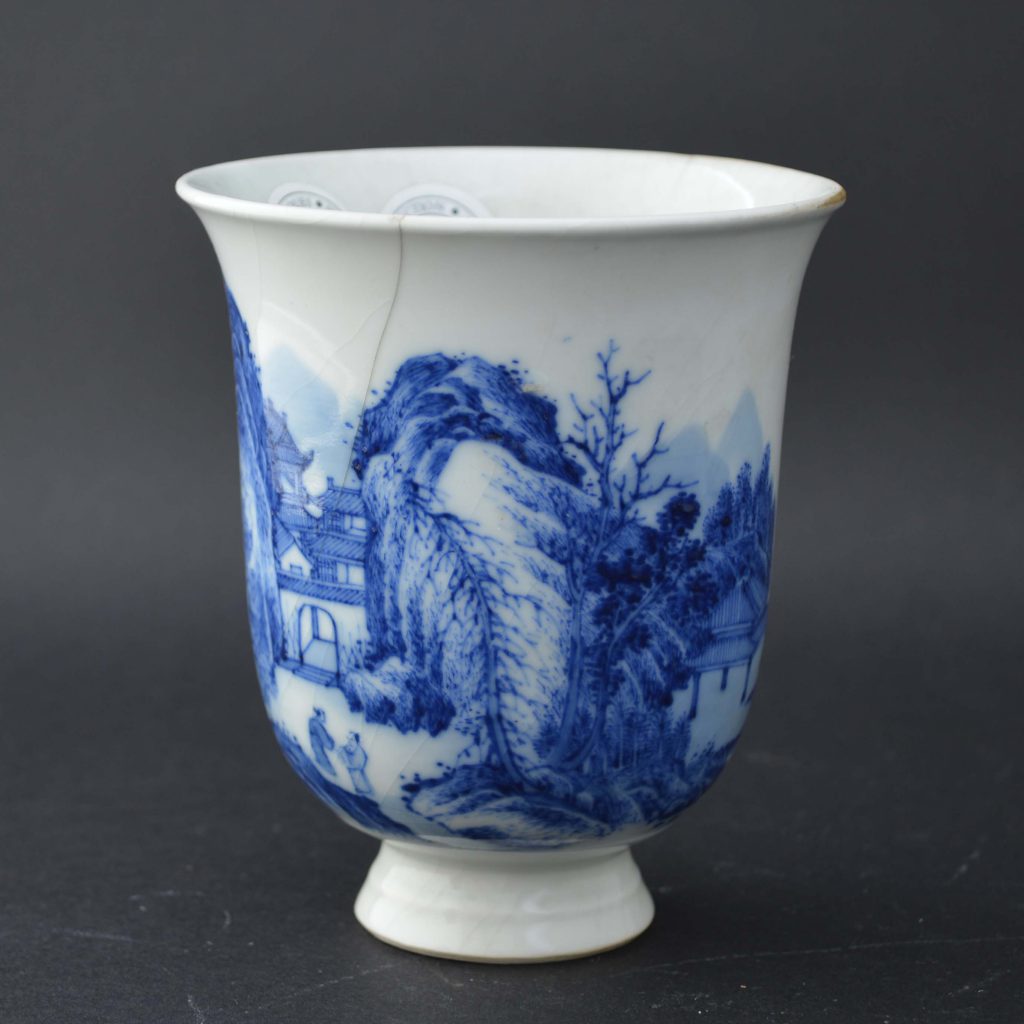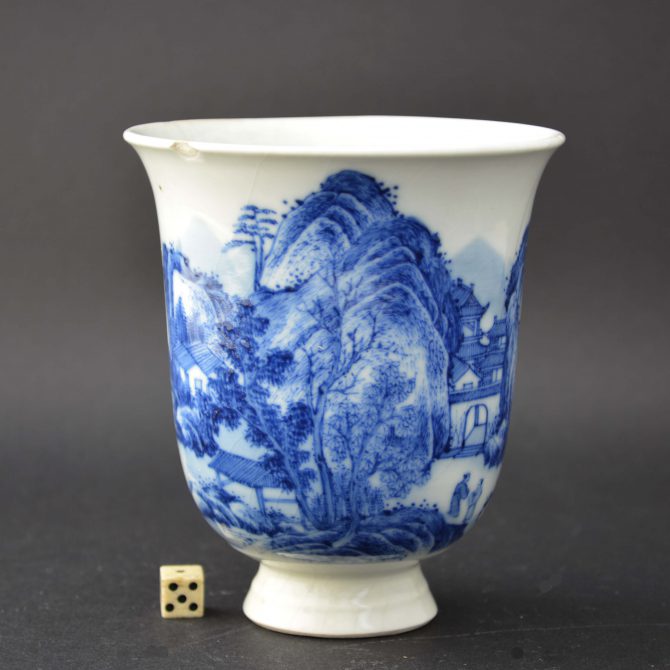
A Finely Painted 18th Century Chinese Soft-Paste Porcelain Blue and White Beaker.
A Qianlong soft-paste porcelain beaker c.1760-1780. Finely painted in cobalt blue with an extensive mountainous landscape with buildings and fingers.
SOLD
- Condition
- Poor ; there is a large dark crack c.75 mm, a much smaller crack and a shallow chip c.8 x 3 mm.The rim has a polished area c.60 mm.
- Size
- Height : 10.1 cm. (4 inches).
- Provenance
- NICOLAS THOMPSON COLLECTION : Nicholas de la Mare Thompson (1928-2010), the grandson of the author Walter de la Mare spent his career in publishing. He started at Nesbit where he was editor of the Janet and John series of children’s books but not all of his career was so safe. He wrestled with W.H. Smith over the content of Madonna’s raunchy Sex book on behalf of Paul Hamlyn’s Octopus Group and defeated Margaret Thatcher over Spycatcher. He could not bare dogma or hypocrisy. It was hardly surprising that as a committee member of the O.C.S. he had his own ideas. He read and could recite great swaths of the articles of the Society, he used this not to attack but to stimulate debate. He approached the Society in the same way as he approached his understanding of Chinese ceramics, by stripping it down and starting again using clear empirical thinking. He was very concerned the Society was open to all and was run for the benefit of all members. Nicholas came from a family of collectors, his love of oriental ceramics was broad but his focus was on early monochromes, especially those from the Song dynasty. He bought what he loved, what he thought had merit, not what was said to be good, and certainly not anything because it was fashionable. He didn’t have a stamp collectors approach, filling in the gaps of pre-existing ordered collection, rather he would react to an object, feeling it was right for his collection. Sometimes he wasn’t sure if it was right for his collection or not. He would then “borrow” pieces and live with them, other times he would ask his wife Caroline, who’s eye he trusted, if he should keep the piece or not. He was amused because I was often able to know if he would keep a piece before he did. We discussed “pots” endlessly, he loved to talk about ceramics with a wide variety of people, and enjoyed the company of others on O.C.S. trips as well as in discussion groups or anywhere else. Later on he combined his love of Chinese ceramics with his love of books by extending his library to include rare early books, he used these to trace the development of collecting and scholarship in the 19th and early 20th century. He was fascinated by earlier scholarship, what was not understood but also what they understood and we have lost. He was always reading and wanted to know more right up to the end, he didn’t see impending death as a barrier to knowledge or indeed collecting. The week before he died he questioned, if only for a second, whether it was too late to buy another pot for the collection. He concluded it was not, he was a true collector. Nicolas died on the 25th of April 2010 at the age of 82 after living with cancer for two years. He leaves behind his energetically supportive wife Caroline and his three children. He was a kind, gentle and incredibly civilised man with a very sharp mind and dry sense of humour, he was passionate about the Society, its aims and its members. He was an incredibly supportive and thoughtful friend and is very much missed .
- Stock number
- 24848
Information
Chinese Soft-Paste Porcelain :
Christiaan Jorg States in : Chinese Porcelain in the Collection of the Rijksmuseum Amsterdam, The Ming and Qing Dynasties (Christiaan Jorg, Phillip Wilson, The Rijksmuseum, 1997) "Chinese soft-pate porcelain, which is different from European soft-paste, originated about 1700 and became popular in the second quarter of the 18th century as part of the export assortment. Unlike ordinary porcelain, it is not translucent and often has a creamy-white appearance. The glaze is often finely crackled as a result of a difference in cooling between the glaze and the body. The later is made of a white-firing clay, called huashi, `slippery stone`, the use of which is documented in the reports of 1712 and 1722 by the Jesuit Pere d`Entrecolles. As the clay was expensive, soft-paste pieces are usually small and thinly potted. They are also well-painted, as the body is particularly suitable for detailed drawing. Besides this `true` soft-paste, there are pieces with an ordinary porcelain body and a coating of `huashi` clay, which gives the same effect". Chinese soft-paste porcelain of the early 18th century appears to be confined to small objects used by Chinese scholars, small vases for a single flower, seal-paste boxes and other objects for the scholar`s desk. These pieces were special and more expensive than their hard-paste porcelain counterparts. By the mid-18th century soft-paste porcelain was used to a limited degree for export-ware, and few if any scholar`s objects were produced. It was used for, among other designs, pieces in the Meissen style but only for the blue and white porcelain. It seams curious to be copying European hard-paste porcelain with Chinese soft-paste porcelain, especially as it was more expensive to produce. This is especially odd as all the coloured Meissen porcelain was copied in hard-paste porcelain. Ironically many of the Meissen designs copied were themselves copies of Chinese designs. During the latter part of the 18th century soft-paste porcelain was used for larger pieces, vases, jars and other export wares, but even at this time it was normally reserved for the better quality painting and was painted with a good bright cobalt pigment.
